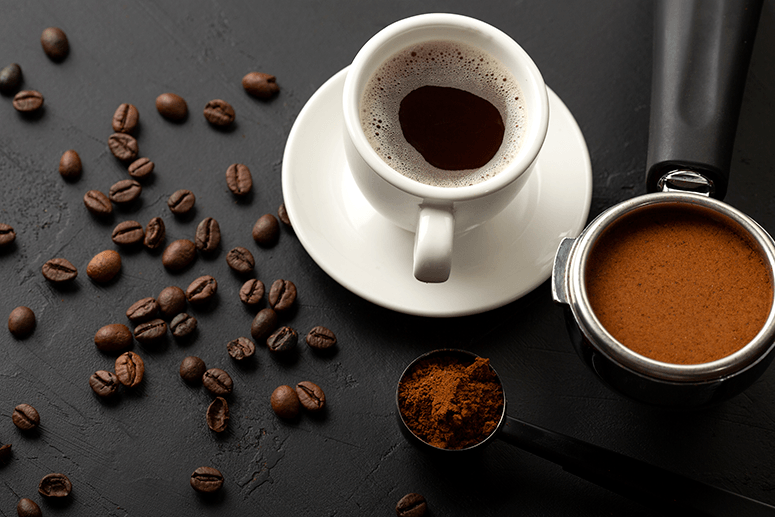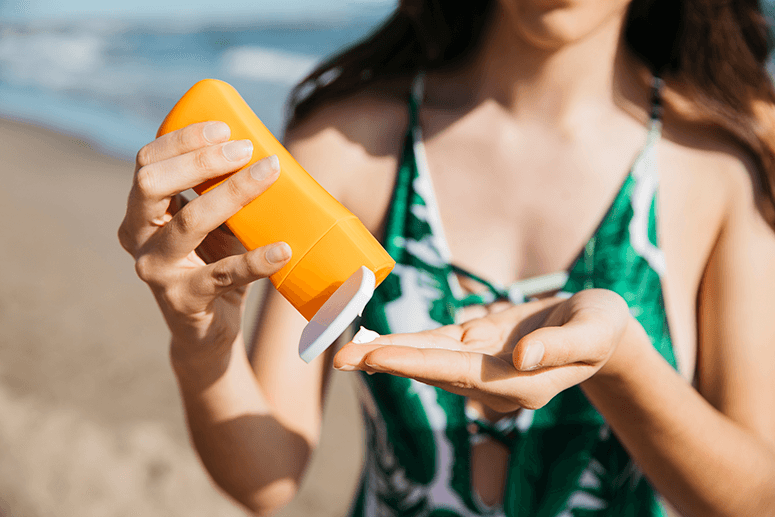The truth behind health myths
In the era of the internet, misinformation and myths are abundant. Google, for one, can serve as a valuable friend to many of us hypochondriacs, as typing in a symptom yields hundreds of possible causes and diseases. However, sorting through this vast amount of information and identifying trustworthy sources can take time and effort. Even individuals with good intentions, such as friends and family, may unknowingly share articles and blogs that sound credible but can be not only wrong but menacing to our well-being.
What has caused the widespread prevalence of health myths? According to Zackary Berger, M.D., an assistant professor at the Johns Hopkins School of Medicine, these myths endure because they align with our existing biases. He explains that we constantly encounter misleading, poorly presented and distorted statistics, and we tend to selectively accept only the information that supports our preconceived notions or desires. “We are bombarded with inaccurate, incorrectly presented, and flat-out misrepresented information,” Dr. Berger emphasizes, adding that “the human brain is a wonderful organ to justify conclusions the heart has already reached.”

Nutrition, fitness, and wellness are areas where myths run rampant. According to Rachel Vreeman, M.D., the field of health is often perceived as confusing due to conflicting scientific information. “One day, coffee is said to be beneficial, while the next day, it’s claimed to be harmful.” This constant back-and-forth leaves us both gullible and skeptical about believing anything we hear concerning health and wellness.
Scientists continuously retest theories and make new discoveries. That is the nature of science. However, if we had the opportunity to read in-depth studies, we would often find that differing viewpoints are not necessarily mutually exclusive. Headlines, by their nature, simplify complex information, and a brief tweet cannot provide us with the whole story.
Let’s look at some of the top 14 myths about health that have been debunked.

MYTH: “If you are skinny, you are healthy.”
FACT: Low body weight does not automatically equal good health. While there are higher risks for heavier people categorically, thinner people should not assume they are immune to health issues. According to the Huffington Post, “Individuals with low body weight can be at an increased risk of all-cause mortality, as well as certain health conditions. Many people use low body weight to excuse unhealthy eating and physical inactivity.” But body weight is not the best indicator of internal well-being. A much better indicator is your diet. When it comes to your health, it’s what’s on the inside that counts. At the end of the day, we really are what we eat.
MYTH: “Eggs are bad for your heart.”
FACT: For most people, an egg a day does not increase their risk of a heart attack, stroke, or any other type of cardiovascular disease. The evidence that the cholesterol in one daily egg is safe for most people comes from massive studies conducted mainly at Harvard Medical School that have followed hundreds of thousands of people over decades, regularly reporting what they eat and all the medical conditions they develop.

What matters greatly is what you eat with the egg. The saturated fat in butter, cheese, bacon, sausage, muffins, or scones, for example, raises your blood cholesterol much more than the cholesterol in your eggs. And the highly refined “bad carbs” in white toast, pastries, home fries, and hash browns may also increase your risk of heart disease, stroke, and other cardiovascular diseases.
In the realm of health and wellness, numerous myths have gained traction and managed to persist despite lacking scientific evidence. However, uncovering the truth behind these common health myths is essential. By examining reliable research and expert opinions, we can debunk misconceptions and promote accurate information, separating fact from fiction and paving the way for a healthier and more informed lifestyle.
MYTH: “All fruits should be peeled before eating.”
FACT: The skin on fruit and vegetables like potatoes, apples, carrots, and citrus fruits, are packed with beneficial nutrients. An apple with skin, for example, contains up to 332% more vitamin K, 142% more vitamin A, 115% more vitamin C, and 20% more calcium than a peeled apple. Meanwhile, a boiled potato with skin has up to 175% more vitamin C than a peeled potato. Another added advantage is that the skins of fruits and veggies are high in fiber and can help you feel fuller for longer, which helps to deter snacking so you can manage your weight more effectively.

If you peel the skins, you are cutting out essential nutrients! So skip the undue hassle and enjoy the benefits instead. Just remember to thoroughly wash your fruits and vegetables before consuming them.
MYTH: “If you eat fat, you get fat.”
FACT: It is important to clear up this common misconception. Fat does not make us fat. We gain weight when we eat more than our needs, whether the excess comes from protein, carbohydrates, or fats. From a weight-management standpoint, fat makes food taste good. By consuming it, we feel more satiated and end up craving and eating less food later on. In fact, getting adequate amounts of healthy fats in your diet may make managing your weight easier. From a health and wellness standpoint, according to Colorado State University’s studies, “Fat is needed to help our bodies absorb certain fat-soluble vitamins, including A, D, E, and K. In the brain, fat stimulates the creation of new brain cells, improves our memory, and is critical for reproductive health in men and women because it is used to produce and balance our hormones.”

But there is a type of fat we should avoid: trans fats. Found in most processed and packaged foods—such as cake, cookies, chips, and crackers—it can be hidden on the nutrition label as “partially hydrogenated oils.” This kind of fat is deadly for our hearts. Not only does it raise our LDL (“bad”) cholesterol, but it also lowers our HDL (“good”) cholesterol. The US Food and Drug Administration (FDA) has specifically designated partially hydrogenated oils as “no longer safe.” These include commercial baked goods, such as cakes and cookies, shortening, microwave popcorn, frozen pizza, our beloved non-dairy coffee creamers and refrigerated dough, and fried foods, including French fries, doughnuts, and fried chicken. So stay away from these as much as possible.
MYTH: “Natural is better and less caloric than refined sugar.”
FACT: Sugar is sugar. Coconut sugar, agave nectar, “raw” sugar, palm sugar, evaporated cane juice—these are all sugar. They just sound healthier because they have fancy names. Sad to say that when added to foods, molasses and honey are as caloric as sucrose or table sugar.
Our body processes all these simple sugars in the same way. There is one differentiation worth making, though: Sugar in fruit (fructose) comes along with some fiber, vitamins, antioxidants, and minerals, which makes it somewhat more nutritious than sugar-laden snacks or candy, but its calorie content can be as high. Studies show that a 12-ounce glass of orange juice contains nearly the same amount of sugar as a can of Coke —approximately 10 teaspoons. The best course of action would be to consume the fruit itself rather than juicing it and consuming the fruit with some raw almonds to reduce insulin spikes.
MYTH: “ Coffee stunts your growth.”
FACT: Genetics determine your height. For reasons unknown, this is a wildly common belief. According to Harvard University, “There is no scientifically valid evidence to suggest that coffee can stunt a person’s growth.” This idea may have come from the misconception that coffee causes osteoporosis—a condition that may be associated with loss of height. Both myths have been debunked: Coffee does not cause osteoporosis, and osteoporosis does not routinely make you short. As for any other health risks you believe about coffee, those probably aren’t true either. Coffee isn’t linked to any medical conditions except for a slight, temporary increase in blood pressure.
MYTH: “Chocolate causes acne.”
FACT: A surprising amount of research has been devoted to the link between eating chocolate and acne. Much of the evidence is inconclusive or contradictory, and for now, there is no proof to suggest that the occasional chocolate bar is going to have an impact on your skin.
Most doctors agree that it just comes down to the individual. If you’re prone to acne, you may want to limit your consumption of chocolate and see if it makes a difference, and reach for dark chocolate instead of milk or white chocolate (as it contains less sugar). But you shouldn’t need to swear off chocolate altogether. A good-skin diet is simply a healthy balanced diet! Healthy fats from fatty fish, avocado, nuts, collagen-making vitamin C, and other antioxidants from your daily fruits and vegetables are equally crucial for clear skin plus proper skin hygiene.
MYTH: “Antiperspirants cause breast cancer.”
FACT: This myth started in the early 2000s when studies reported that applying deodorant to cells in a petri dish caused individual cell damage, and aluminum got called out as a potential culprit. But humans apply deodorant to the very outer layer of skin, not to individual exposed kidney cells.
A review of studies later determined that aluminum in various forms is not known to cause cancer in humans. The American Cancer Society has also stated: “There are no strong epidemiologic studies in the medical literature that link breast cancer risk and antiperspirant use and very little scientific evidence to support this claim.”
MYTH: “Microwaving your food kills its nutrients.”
FACT: Microwave ovens stimulate food molecules to generate heat and facilitate cooking. This heat originates from the conversion of energy. Although microwave ovens emit electromagnetic radiation, it is essential to note that various types of radiation exist. Unlike harmful radiation associated with nuclear energy, electromagnetic radiation does not heighten the risk of cancer.
Nevertheless, as a safety measure, microwave ovens incorporate shields and screens to confine the radiation within the necessary confines. If the door is damaged or fails to close properly, fixing it or buying a new one is advisable.
Additionally, no scientific evidence supports the notion that microwaving food diminishes nutrient levels. In reality, all cooking methods lead to some nutrient reduction, influenced by temperature, cooking duration, and the specific cooking method employed. Since microwave cooking typically involves shorter times and lower temperatures than other methods, fewer nutrients are lost due to limited exposure to heat. Moreover, the minimal amount of liquid required in microwave cooking prevents excessive nutrient leakage.
MYTH: “If we don’t drink eight glasses of water daily, we are not properly hydrated.”
FACT: Heinz Valtin, a retired professor of physiology from Dartmouth Medical School who specialized in kidney research and dedicated 45 years to studying the body’s water balance system, suggests that we should consume water during meals and whenever we feel thirsty (although a doctor may provide specific recommendations for individual patients). Dietitian Cara Rosenbloom offers an alternative approach: “A more reliable indicator is to observe the color of your urine. It should be clear or have a color similar to lemonade. If it appears darker, it’s advisable to drink more water.”
It’s essential to recognize that everyone has unique hydration requirements. The commonly known guideline of drinking eight 8-ounce glasses of water per day, also known as the eight-by-eight rule, is based on an outdated belief that dates back centuries. While the principle behind it (water is essential for maintaining good health) is accurate, the notion that everyone needs precisely 64 ounces or two liters of water daily is incorrect. Individual needs vary, and adjusting water intake is based on activity level, temperature and body weight, and signs of dehydration.
MYTH: “Cracking joints causes arthritis.”
FACT: It may drive you crazy when exposed to someone constantly cracking their knuckles, arms, and neck, but surprisingly, it’s not physically harming them.
When the joint moves or is pulled, a vacuum forms within it. The cracking sound is caused by nitrogen gas being pulled into the joint when pressure is put on it. Sometimes, a crack sound can also be heard when a tendon moves over a part of the joint.
Painless cracking of joints is benign and does not cause damage or arthritis. However, if you experience pain while cracking your joints, there could be an underlying condition you might want to have your doctor check out and a reason, or better yet, stop doing it altogether.

MYTH: “We only need to use sunscreen on sunny days.”
FACT: When heading outdoors, it is essential to apply sunscreen, even if the weather is rainy or cloudy. This is because clouds do not block the harmful UVA and UVB rays that can penetrate the skin. Dr. Tony Yuan, MD, a board-certified physician at Doctor On Demand, explains: “Clouds filter less than 25 percent of the UV rays that can lead to skin cancer. Despite feeling cooler on cloudy days, the skin can still absorb a significant portion of UVA and UVB rays. Therefore, it is crucial always to use sunscreen, regardless of the weather.”
Simply applying a high-SPF sunscreen once a day is not sufficient. Dr. Yuan explains that SPF numbers indicate the sunscreen’s ability to block UVB rays over a two-hour period. After this time, “the effectiveness of the protection diminishes significantly, leaving the skin vulnerable to excessive UV ray exposure.” Dr. Yuan recommends reapplying sunscreen every two hours while exposed to the sun. Choosing a sunscreen labeled as “broad-spectrum” is also important to ensure it protects against both UVA and UVB rays, as regular sunscreens only safeguard against UVB rays.
MYTH: “You must have a certain body type to do yoga.”
FACT: While having certain body types can make the learning curve a little easier for certain forms of physical activity, our bodies are surprisingly versatile regardless of the shape. Focus more on what you want to achieve; dwelling on your perceived limitations is a great way to stop yourself from starting anything.
Always be sure to consult a physician if you are looking to take up a new physical activity to ensure that you are able to participate safely. Remember that proper form will save you time and potential pain, so don’t rush through the process. It’s okay to learn at a snail’s pace. The beauty of yoga is that it’s beneficial to almost everyone at any level.
MYTH: “If you drop food but pick it up before five seconds, it’s bacteria-free.”
FACT: Have you ever witnessed someone drop a piece of food, swiftly pick it up, and rely on the “5-second rule” to justify eating it? Well, it’s time to debunk that myth! The “5-second rule” holds no truth as bacteria can latch onto dropped food instantaneously, without any delay. Additionally, the likelihood of your floor being bacteria-free is quite slim.
To prevent illness, it is advisable to err on the side of caution and discard any food that has been dropped, or at the very least, thoroughly wash it before consuming. Taking necessary precautions is crucial to avoid food poisoning. When it comes to moisture content, it plays a significant role. For instance, a slice of watermelon acts like a sponge for bacteria once it comes into contact with the ground. It can potentially absorb harmful microorganisms such as E. Coli and staph infections.
On the other hand, if a hard pretzel falls on the floor, there is generally less reason to be concerned. When considering different floor surfaces, carpets are safer for the pick-it-up-and-eat approach as the fibers retain fewer bacteria. Tiles, on the other hand, pose a higher risk. It is also important to take into account the location. Eating something off your living room carpet is probably safer than consuming food dropped on a high-traffic gas station restroom floor. Ultimately, using common sense is key.
In the realm of health and wellness, numerous myths have gained traction and managed to persist despite lacking scientific evidence. However, uncovering the truth behind these common health myths is essential. By examining reliable research and expert opinions, we can debunk misconceptions and promote accurate information, separating fact from fiction and paving the way for a healthier and more informed lifestyle.


